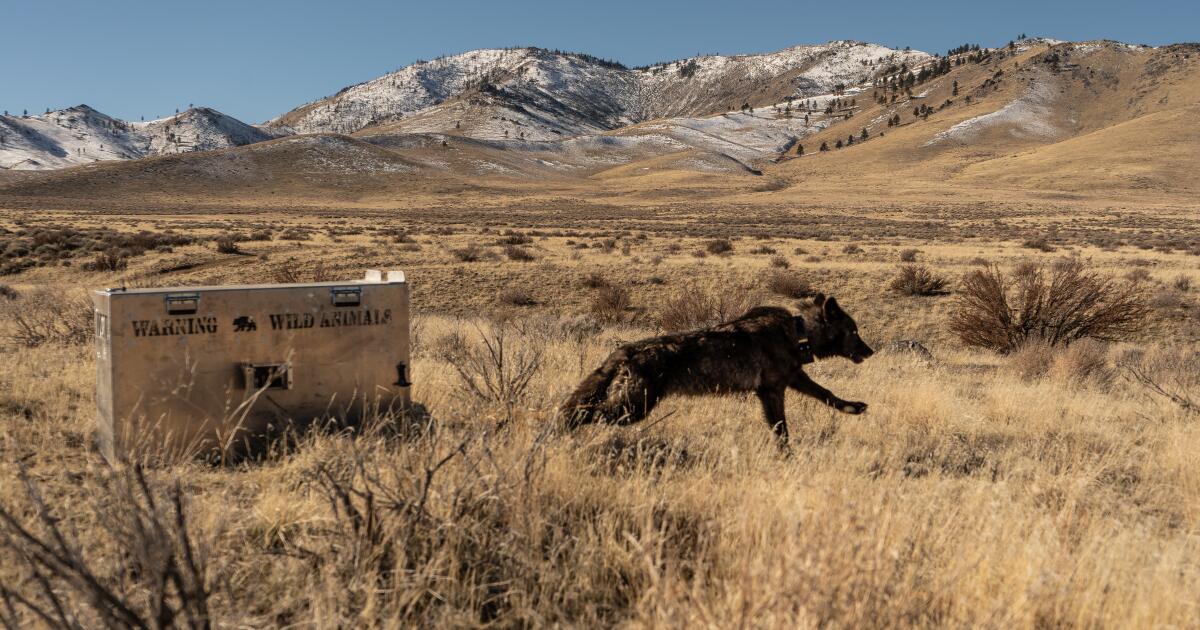UPDATE: California officials have euthanized four gray wolves from the Beyem Seyo pack due to an alarming rise in cattle deaths, impacting ranchers across the Sierra Valley. This decision, announced by the California Department of Fish and Wildlife, comes after a surge in livestock losses, with these wolves reportedly responsible for 70 total cattle deaths from March 28 to September 10, 2023.
Ranchers in the region have expressed deep frustration, noting the wolves’ shift from their natural prey to cattle, which poses a significant threat to their livelihoods, costing ranchers thousands of dollars per lost animal. “They’ve just been tearing into our baby calves, mostly our yearlings,” said Siskiyou County rancher Joel Torres.
Officials confirmed that the Beyem Seyo pack’s predation has escalated to an unprecedented level, with 63% of California’s wolf-related livestock losses attributed to these four wolves. The euthanized wolves included a breeding male and female pair, alongside two others, all of which had become reliant on cattle for food.
“Wolves are one of the state’s most iconic species and coexistence is our collective future, but that comes with tremendous responsibility and sometimes hard decisions,” stated department Director Charlton Bonham.
Despite extensive hazing efforts—over 18,000 hours spent on 95 operations across 114 days—ranchers found the wolves continued to attack livestock, leading to this controversial decision. Hazing methods included firing guns into the air, utilizing vehicles to scare the wolves away, and even non-lethal bean bags. However, these attempts failed to deter the wolves from preying on cattle.
The impact of these killings goes beyond immediate financial losses for ranchers. The shift in the Beyem Seyo pack’s hunting behavior threatens long-term recovery efforts for gray wolves in California, as the younger wolves learn to hunt cattle instead of their natural prey. “This shift not only undermines recovery efforts for the species in California but also risks altering generational feeding patterns and broader ecological dynamics,” Fish and Wildlife emphasized.
While some ranchers are calling for the resumption of wolf hunts—similar to practices in states like Idaho and Montana—California law currently protects gray wolves as an endangered species. Lethal removal is only permitted under strict conditions, which complicates the situation further.
The gray wolf’s return to California has been celebrated for its ecological benefits, including controlling deer and elk populations, which helps restore overgrazed vegetation and supports biodiversity. The story of OR-7, the wolf that crossed into California in 2011, sparked hopes of a flourishing wolf population. However, the current crisis presents a complex challenge for rural communities.
As ranchers grapple with the implications of this decision, the ongoing tension between wildlife conservation and agricultural interests remains a critical issue. Fish and Wildlife continues to monitor the situation closely, emphasizing the need for coexistence while addressing the immediate threats posed by the wolves’ predation on livestock.
The situation in the Sierra Valley is developing rapidly, and officials urge ranchers to remain vigilant while exploring new strategies to manage the wolf population effectively. The balance between protecting endangered species and safeguarding rural livelihoods remains a delicate and urgent matter.






































































